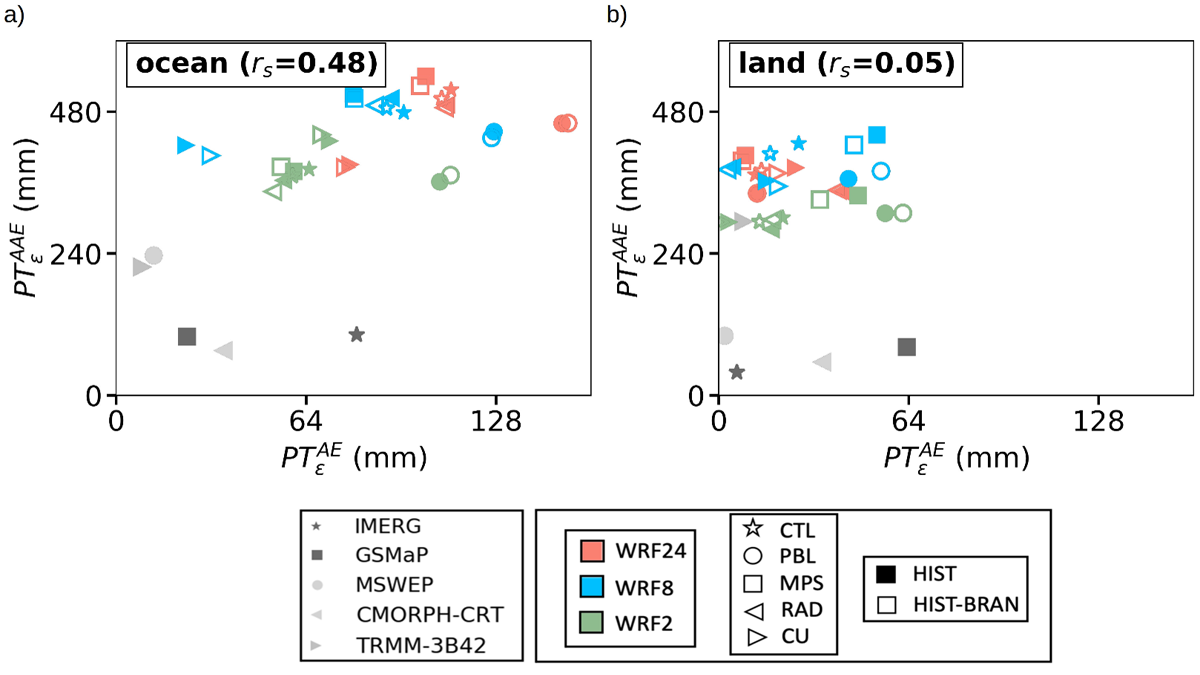Editors’ Highlights are summaries of recent papers by AGU’s journal editors.
Source: Journal of Advances in Modeling Earth Systems
Simulations of complex physical processes always entail various sources of errors. These errors can be of different signs and can consequently cancel each other out when using traditional performance metrics such as the bias error metric.
Di Luca et al. [2021] present a framework to approximate precipitation according to three terms that describe different aspects of the rainfall field, including large-scale environmental conditions and the frequency and intensity of rainfall. The authors apply the methodology to a large ensemble of high-resolution simulations representing the precipitation associated with strong cyclones in eastern Australia. Using several satellite-based products, they show that simulations produce precipitation too often, with an intensity that is too weak leading to strong compensation.
They further define new error metrics including the additive absolute error (PTEAAE, see figure), that explicitly quantify the degree of error compensation. With PTEAAE, it is clearly shown that convection-permitting simulations (in green) consistently improve the performance compared to coarser resolution simulations that used parameterized convection (red and blue colors). These improvements are not apparent when using the metric allowing for error compensation.
Citation: Di Luca, A., Argüeso, D., Sherwood, S., & Evans, J. P. [2021]. Evaluating precipitation errors using the environmentally conditioned intensity-frequency decomposition method. Journal of Advances in Modeling Earth Systems, 13, e2020MS002447. https://doi.org/10.1029/2020MS002447
—Jiwen Fan, Editor, Journal of Advances in Modeling Earth Systems

